Audi Q4 e-tron vs Ford Puma – Performance, range & efficiency compared
Both models have their strengths – but which one suits you more?
Compare performance, efficiency, price and space directly: Audi Q4 e-tron or Ford Puma?
Costs and Efficiency: When it comes to price and running costs, the biggest differences usually appear. This is often where you see which car fits your budget better in the long run.
Ford Puma has a significantly advantage in terms of price – it starts at 24800 £, while the Audi Q4 e-tron costs 39600 £. That’s a price difference of around 14786 £.
In terms of energy consumption, the advantage goes to the Ford Puma: with 13.10 kWh per 100 km, it’s clearly perceptible more efficient than the Audi Q4 e-tron with 15.90 kWh. That’s a difference of about 2.80 kWh.
As for range, the Audi Q4 e-tron performs noticeable better – achieving up to 554 km, about 178 km more than the Ford Puma.
Engine and Performance: Power, torque and acceleration say a lot about how a car feels on the road. This is where you see which model delivers more driving dynamics.
When it comes to engine power, the Audi Q4 e-tron has a decisively edge – offering 340 HP compared to 168 HP. That’s roughly 172 HP more horsepower.
In acceleration from 0 to 100 km/h, the Audi Q4 e-tron is clearly perceptible quicker – completing the sprint in 5.40 s, while the Ford Puma takes 7.40 s. That’s about 2 s faster.
In terms of top speed, the Ford Puma performs to a small extent better – reaching 210 km/h, while the Audi Q4 e-tron tops out at 180 km/h. The difference is around 30 km/h.
There’s also a difference in torque: Audi Q4 e-tron pulls decisively stronger with 679 Nm compared to 290 Nm. That’s about 389 Nm difference.
Space and Everyday Use: Beyond pure performance, interior space and usability matter most in daily life. This is where you see which car is more practical and versatile.
Both vehicles offer seating for 5 people.
In curb weight, Ford Puma is clearly lighter – 1316 kg compared to 2035 kg. The difference is around 719 kg.
In terms of boot space, the Audi Q4 e-tron offers barely noticeable more room – 535 L compared to 523 L. That’s a difference of about 12 L.
In maximum load capacity, the Audi Q4 e-tron performs to a small extent better – up to 1490 L, which is about 207 L more than the Ford Puma.
When it comes to payload, Audi Q4 e-tron barely noticeable takes the win – 515 kg compared to 469 kg. That’s a difference of about 46 kg.
Who wins the race?
The Audi Q4 e-tron proves to be is largely superior and therefore becomes our DriveDuel Champion!
Audi Q4 e-tron is the better all-rounder in this comparison.
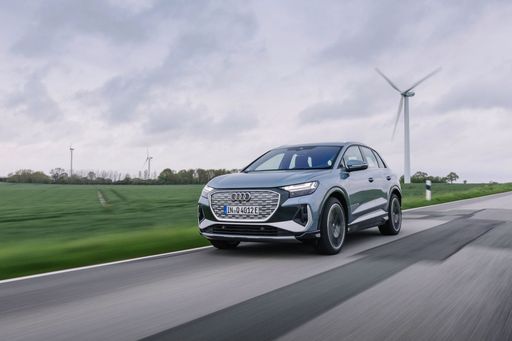
Audi Q4 e-tron
Audi Q4 e-tron
The Audi Q4 e-tron seamlessly combines sustainable driving with premium comfort, embodying the brand's commitment to electric mobility. Its sleek design and spacious interior create an inviting atmosphere, perfect for those who appreciate both style and practicality. With a focus on innovative technology, the Q4 e-tron offers a dynamic driving experience that appeals to modern drivers seeking eco-friendly alternatives.
details @ audi-mediacenter.com
@ audi-mediacenter.com
 @ audi-mediacenter.com
@ audi-mediacenter.com
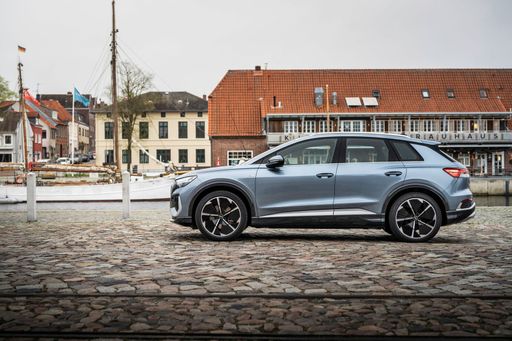 @ audi-mediacenter.com
@ audi-mediacenter.com
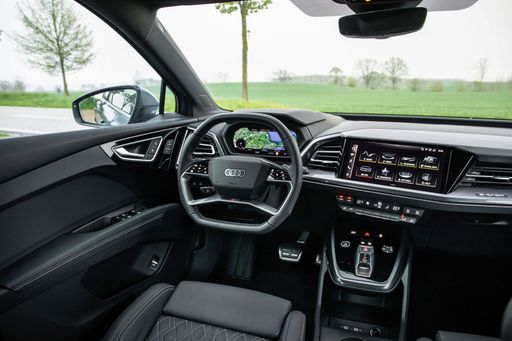 @ audi-mediacenter.com
@ audi-mediacenter.com
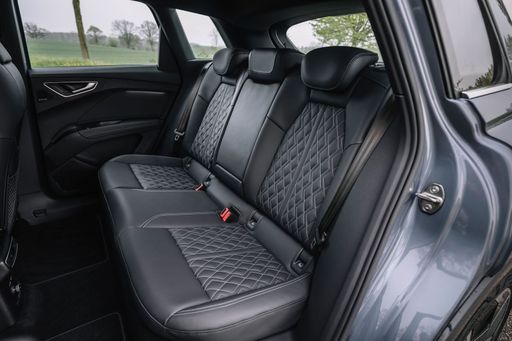 @ audi-mediacenter.com
@ audi-mediacenter.com
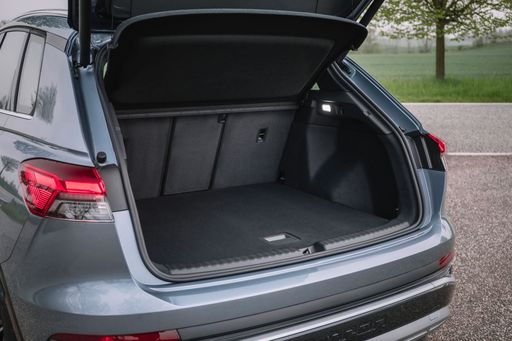 @ audi-mediacenter.com
@ audi-mediacenter.com
Ford Puma
The Ford Puma presents itself as a stylish compact SUV with a distinctive design that combines practicality with a dynamic driving experience. Its sleek lines and sporty aesthetics make it stand out on the road, while the interior offers a comfortable and tech-savvy environment. With an emphasis on efficiency and a smooth drive, the Ford Puma is well-suited for both urban commutes and countryside adventures.
details @ puma.fordpresskits.com
@ puma.fordpresskits.com
 @ puma.fordpresskits.com
@ puma.fordpresskits.com
 @ puma.fordpresskits.com
@ puma.fordpresskits.com
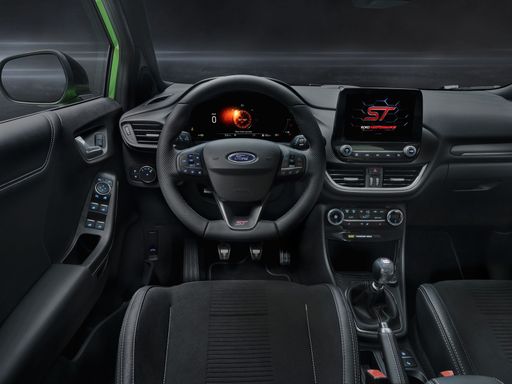 @ puma.fordpresskits.com
@ puma.fordpresskits.com

|

|
|
|
|
Costs and Consumption |
|
|---|---|
|
Price
39600 - 58800 £
|
Price
24800 - 36300 £
|
|
Consumption L/100km
-
|
Consumption L/100km
5.4 - 5.9 L
|
|
Consumption kWh/100km
15.9 - 17.4 kWh
|
Consumption kWh/100km
13.1 - 13.9 kWh
|
|
Electric Range
406 - 554 km
|
Electric Range
361 - 376 km
|
|
Battery Capacity
59 - 77 kWh
|
Battery Capacity
43 kWh
|
|
co2
0 g/km
|
co2
0 - 135 g/km
|
|
Fuel tank capacity
-
|
Fuel tank capacity
42 L
|
Dimensions and Body |
|
|---|---|
|
Body Type
SUV
|
Body Type
SUV
|
|
Seats
5
|
Seats
5
|
|
Doors
5
|
Doors
5
|
|
Curb weight
2035 - 2235 kg
|
Curb weight
1316 - 1563 kg
|
|
Trunk capacity
520 - 535 L
|
Trunk capacity
456 - 523 L
|
|
Length
4588 mm
|
Length
4186 - 4226 mm
|
|
Width
1865 mm
|
Width
1805 mm
|
|
Height
1614 - 1632 mm
|
Height
1550 - 1555 mm
|
|
Max trunk capacity
1460 - 1490 L
|
Max trunk capacity
1216 - 1283 L
|
|
Payload
505 - 515 kg
|
Payload
367 - 469 kg
|
Engine and Performance |
|
|---|---|
|
Engine Type
Electric
|
Engine Type
Electric, Petrol MHEV
|
|
Transmission
Automatic
|
Transmission
Automatic, Manuel
|
|
Transmission Detail
Reduction Gearbox
|
Transmission Detail
Reduction Gearbox, Manual Gearbox, Dual-Clutch Automatic
|
|
Drive Type
Rear-Wheel Drive, All-Wheel Drive
|
Drive Type
Front-Wheel Drive
|
|
Power HP
204 - 340 HP
|
Power HP
125 - 168 HP
|
|
Acceleration 0-100km/h
5.4 - 8.1 s
|
Acceleration 0-100km/h
7.4 - 9.8 s
|
|
Max Speed
160 - 180 km/h
|
Max Speed
160 - 210 km/h
|
|
Torque
310 - 679 Nm
|
Torque
170 - 290 Nm
|
|
Number of Cylinders
-
|
Number of Cylinders
3
|
|
Power kW
150 - 250 kW
|
Power kW
92 - 124 kW
|
|
Engine capacity
-
|
Engine capacity
999 cm3
|
General |
|
|---|---|
|
Model Year
2023 - 2025
|
Model Year
2025
|
|
CO2 Efficiency Class
A
|
CO2 Efficiency Class
A, D
|
|
Brand
Audi
|
Brand
Ford
|
What drive types are available for the Audi Q4 e-tron?
The Audi Q4 e-tron is offered with Rear-Wheel Drive or All-Wheel Drive.
The prices and data displayed are estimates based on German list prices and may vary by country. This information is not legally binding.
